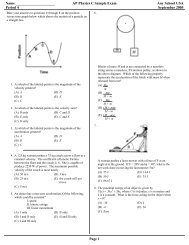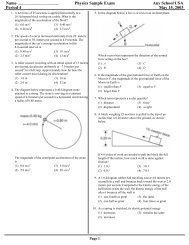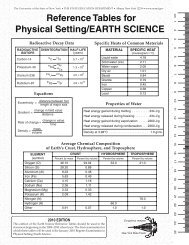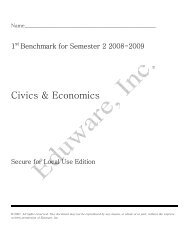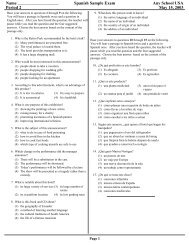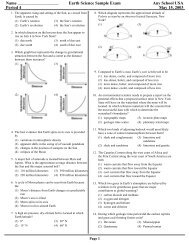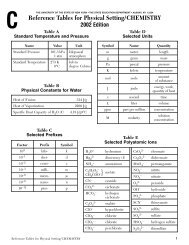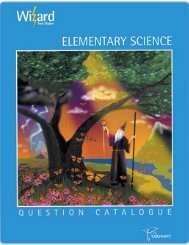NYS Regents Chemistry June 21, 2002 - Eduware
NYS Regents Chemistry June 21, 2002 - Eduware
NYS Regents Chemistry June 21, 2002 - Eduware
You also want an ePaper? Increase the reach of your titles
YUMPU automatically turns print PDFs into web optimized ePapers that Google loves.
<strong>NYS</strong> <strong>Regents</strong> <strong>Chemistry</strong><br />
61. Base your answers to the following questions on the information given below.<br />
Testing of an unknown solid shows that it has the properties listed below.<br />
(1) low melting point<br />
(2) nearly insoluble in water<br />
(3) electricity<br />
(4) relatively soft solid<br />
a State the type of bonding that would be expected in the particles of this substance.]<br />
b Explain in terms of attractions between particles why the unknown solid has a low melting point.<br />
c Explain why the particles of this substance are nonconductors of electricity.<br />
62. Base your answers to the following questions on the information below.<br />
A hot pack contains chemicals that can be activated to produce heat. A cold pack contains chemicals that feel cold<br />
when activated.<br />
a Based on energy flow, state the type of chemical change that occurs in a hot pack.<br />
b A cold pack is placed on an injured leg. Indicate the direction of the flow of energy between the leg and the cold pack.<br />
c What is the Law of Conservation of Energy Describe how the Law of Conservation of Energy applies to the chemical reaction that<br />
occurs in the hot pack.<br />
63. The table below shows the electronegativity of selected elements of the Periodic Table.<br />
a On the grid set up a scale for electronegativity on the y-axis. Plot the data by drawing a best-fit line.<br />
b Using the graph, predict the electronegativity of nitrogen. _________________<br />
c For these elements, state the trend in electronegativity in terms of atomic number.<br />
Base your answers to questions 64 through 69 on the following redox reaction, which occurs spontaneously.<br />
64. Write the half-reaction for the reduction that occurs.<br />
65. Write the half-reaction for the oxidation that occurs.<br />
Zn + Cr 3+ → Zn 2+ +Cr<br />
Page 6



